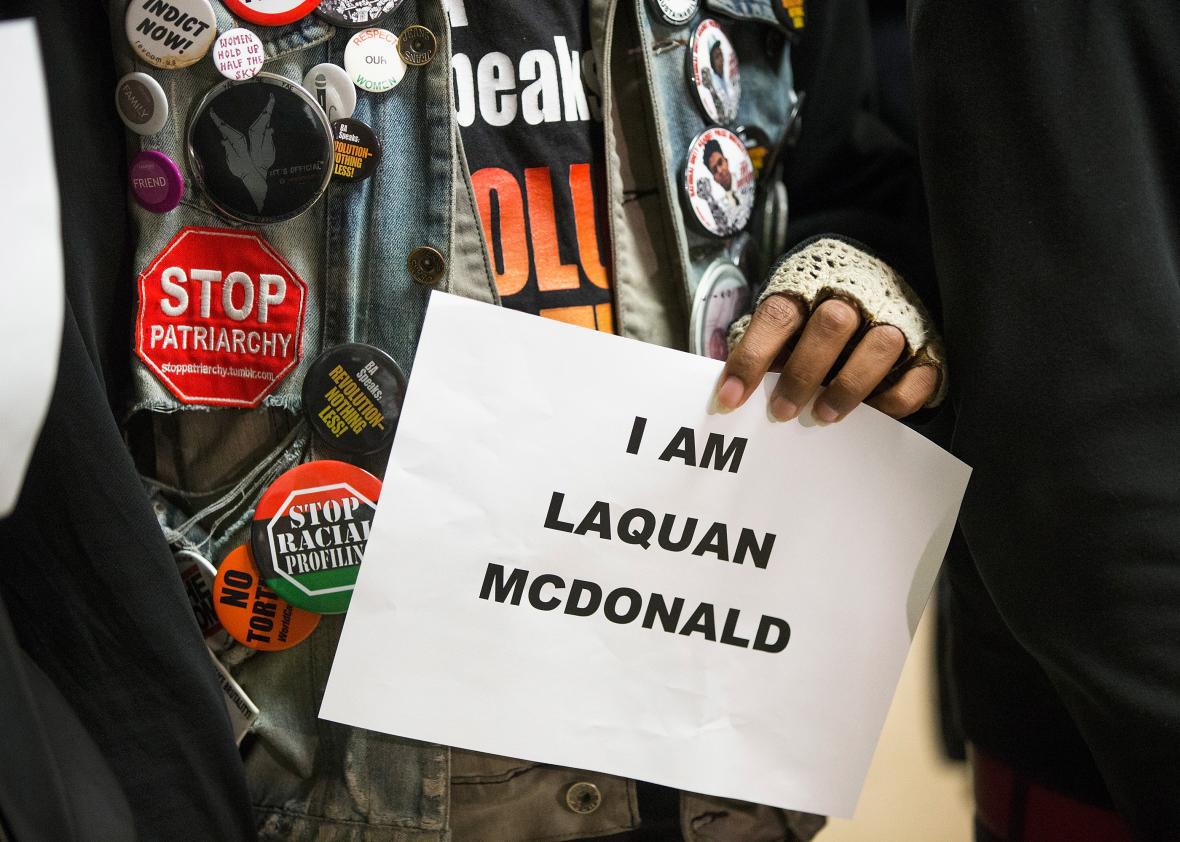Three of the Chicago police officers on the scene when Jason Van Dyke shot and killed Laquan McDonald in 2014 have been indicted on charges of conspiracy, obstruction of justice, and official misconduct. They stand accused of lying on incident reports about the moments leading up to Van Dyke’s use of deadly force against the black 17-year-old.
The indictment, which is written in a way that suggests more officers could still be charged for participating in the cover-up, accuses David March, Joseph Walsh, and Thomas Gaffney of allegedly coordinating with Van Dyke—who has been charged with murder—to provide false accounts of the shooting “in order to shield their fellow officer from criminal investigation and prosecution.”
In a report submitted to the Chicago Police Department, March wrote that McDonald had “committed aggravated assaults against the three officers, finally forcing [Van Dyke], in defense of his life, to shoot and kill” him. In a separate report, Walsh wrote that “when MCDONALD got to within 12 to 15 feet of the officers he swung the knife toward the officers in an aggressive manner.” Gaffney submitted a report that said three officers had been “battered” during the run-up to the shooting.
All of these claims were revealed to be lies upon the release of a dashcam video that showed McDonald’s final moments. The release of the video, which sparked protests and led to the ouster of Chicago’s police superintendent, proved McDonald had not threatened or acted in an aggressive manner toward any of the officers in the moments before Van Dyke shot him 16 times.
In the indictment, the officers are accused of mischaracterizing “the video recordings so that independent criminal investigators would not know the truth about the Laquan McDonald killing and the public would not see the video recordings of the events.” It’s unclear at what point the three officers named in the indictment watched the dashcam footage, and what role their descriptions of it may have played in the city’s decision to keep the video out of public view until a judge ordered its release in November 2015.
The outcry over McDonald’s death in the wake of the video’s release spurred the Obama-era Department of Justice to launch an investigation into policing in Chicago. That effort led to a blistering report that found, among other things, that “a code of silence among Chicago police officers exists, extending to lying and affirmative efforts to conceal evidence.”
The Justice Department’s report was supposed to lead to a court-enforced consent decree that would have mandated a reform agenda. The Trump administration, however, has scuttled plans for that consent decree to take effect.
